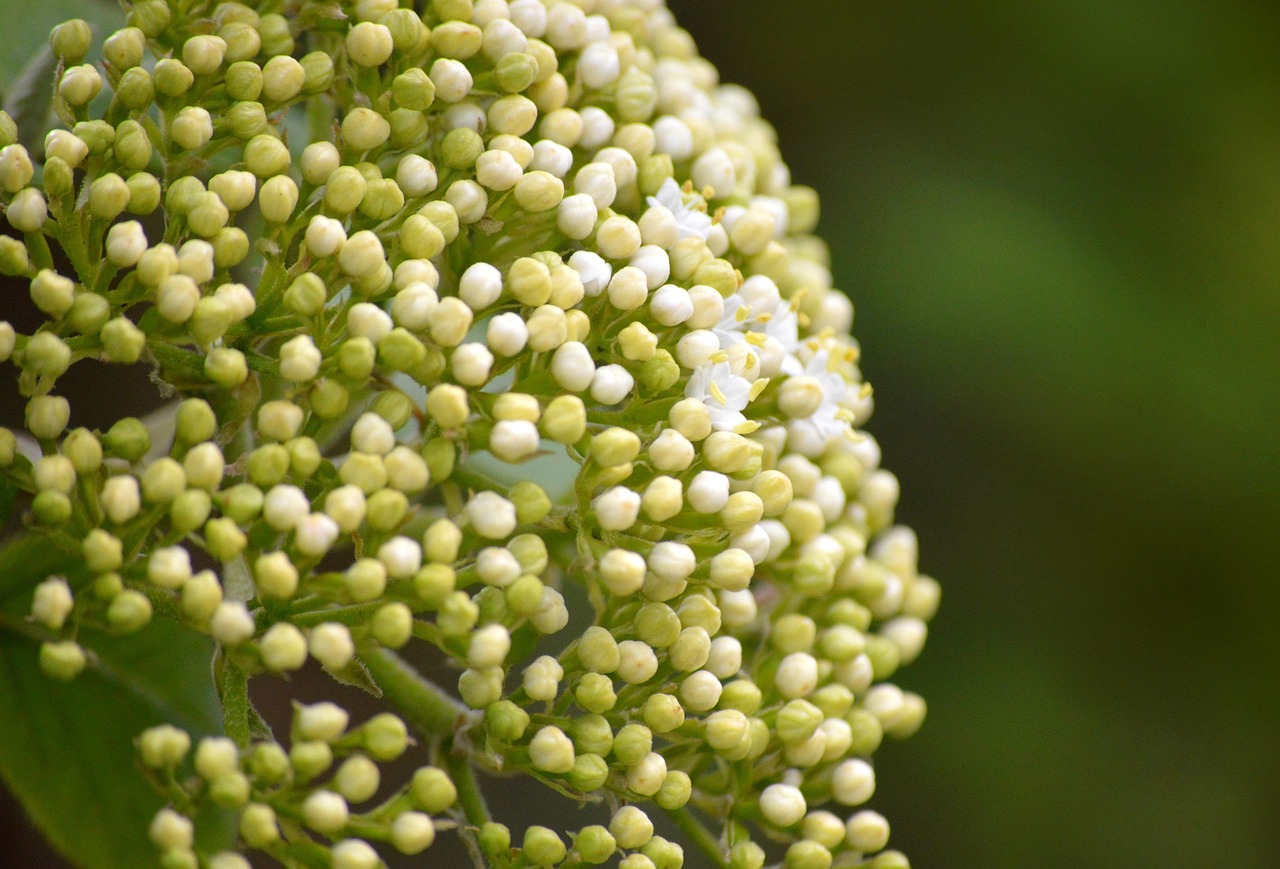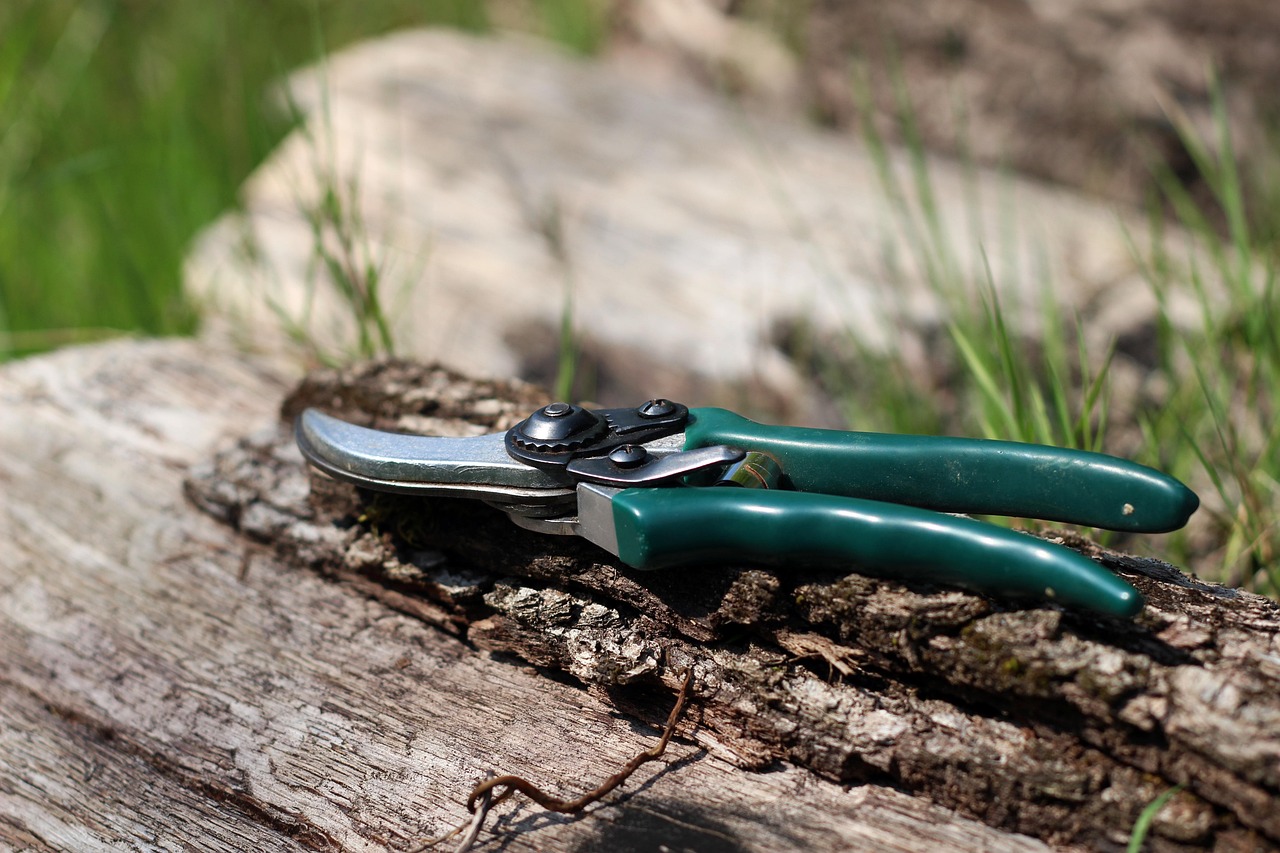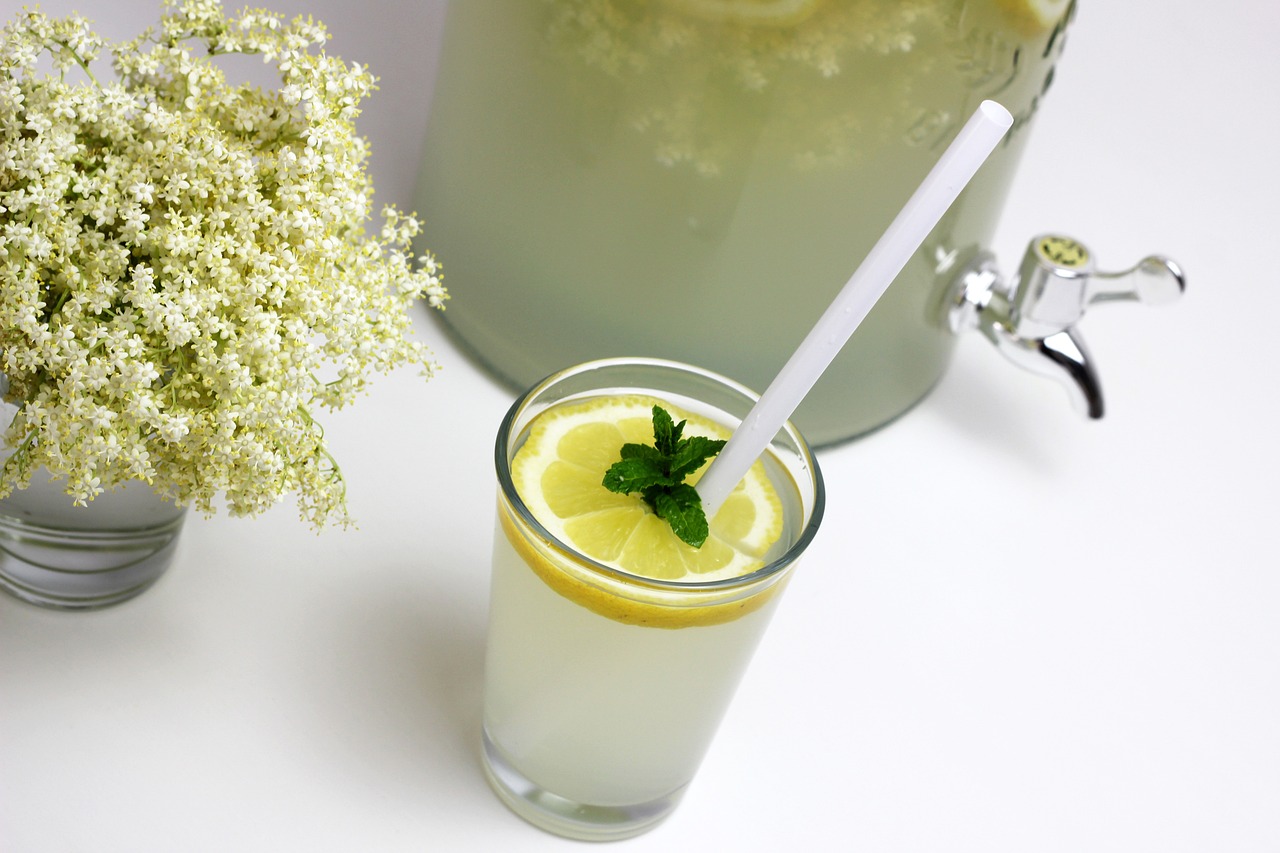Pruning elderberry plants enhances their resilience by promoting healthy growth, preventing disease, and increasing fruit production. Proper techniques and timing are essential for maintaining robust plants that can withstand environmental challenges.
Elderberry plants, known scientifically as Sambucus, are celebrated not just for their ornamental beauty but also for their health benefits and culinary uses. These hardy shrubs can thrive in various climates and soil types. However, like many plants, they require regular maintenance to ensure optimal health and productivity. Pruning is a crucial aspect of elderberry care that can significantly impact their growth and resilience.

Understanding the pruning process is vital for anyone looking to cultivate elderberries successfully. Regular pruning helps manage the size of the plant, removes dead or diseased wood, and encourages new growth. Additionally, properly pruned elderberry plants are more productive, yielding larger and healthier fruit clusters. To maximize these benefits, it is important to know when and how to prune.
Benefits of Pruning Elderberry Plants
Pruning offers several advantages for elderberry plants, including:
- Improved Airflow: Pruning removes overcrowded branches, allowing better air circulation. This reduces the risk of fungal diseases.
- Enhanced Light Penetration: By thinning the canopy, sunlight reaches more of the plant, promoting even growth.
- Increased Fruit Production: A well-pruned elderberry bush can produce more fruit by encouraging the development of strong fruiting branches.
- Healthier Plants: Removing dead or diseased branches helps prevent the spread of pathogens.
It’s essential to conduct pruning at the right time of year. Generally, the best time to prune elderberries is late winter or early spring before new growth begins. This timing allows the plant to heal quickly and minimizes stress during the growing season.

When to Prune Elderberry Plants
Understanding the optimal timing for pruning is key to successful elderberry care. The following table highlights the recommended pruning schedule and activities:
| Time of Year | Pruning Activities |
|---|---|
| Late Winter (February to March) | Cut back last year’s growth to 1/3 or 1/2 of their height. Remove any dead or diseased wood. |
| Early Spring (April) | Evaluate new growth. Thin out crowded branches to improve airflow. |
| Summer (June to July) | Pinch back excessive new growth to promote bushiness and manage size. |
| Fall (September to October) | Conduct any necessary clean-up pruning after fruit harvest. |
In addition to timing, knowing which branches to prune is also crucial. Elderberries typically produce fruit on new wood from the previous year’s growth. Therefore, while pruning, focus on:
- Removing dead or damaged branches.
- Thinning out crowded growth to allow better light distribution.
- Cutting back older branches that have not produced fruit in recent years.
- Encouraging strong new shoots that will bear fruit in the coming season.
Tools for Pruning Elderberry Plants
Having the right tools can make the pruning process easier and more effective. Here are some essential tools you should consider:

- Hand Pruners: Ideal for small branches and precise cuts.
- Loppers: Useful for thicker branches that hand pruners cannot handle.
- Saw: A pruning saw may be necessary for larger or older branches.
- Gloves: Protect your hands while working with thorny or rough branches.
Caring for your tools by keeping them sharp will ensure clean cuts and reduce damage to the plant. Clean tools also help prevent the spread of disease between plants.
The process of pruning can seem daunting at first, but with practice, you will become more comfortable with it. Remember that pruning is not just about cutting; it’s about understanding the plant’s growth habits and encouraging its natural shape. As you become familiar with your elderberry plants, you will notice how responsive they are to thoughtful pruning practices.
The reward for your efforts will be healthier, more resilient elderberry plants that thrive in your garden year after year.

Techniques for Pruning Elderberry Plants
To effectively prune elderberry plants, it is essential to employ the right techniques. These techniques not only enhance plant health but also increase fruit production and overall resilience. Here are some key pruning methods to consider:
Crown Thinning
Crown thinning involves selectively removing branches within the canopy of the elderberry plant. This technique opens up the center of the plant, allowing light and air to penetrate. The following steps outline how to perform crown thinning:
- Identify crowded branches or those that cross each other.
- Use hand pruners or loppers to cut these branches back to their point of origin.
- Aim to maintain a balanced shape while ensuring adequate space between remaining branches.
By employing crown thinning, you promote a healthier environment for the plant. This method helps prevent fungal diseases, which are more likely in dense foliage.
Heading Back
Heading back is a technique that involves cutting back the tips of branches to encourage bushier growth. This method is especially useful for young elderberry plants or those that have become leggy. Here’s how to do it:
- Select branches that are too long or have an unappealing shape.
- Make cuts just above a leaf node or bud, typically about one-third of the branch’s length.
- Focus on maintaining a uniform height across all branches.
This technique stimulates new growth from the remaining buds, resulting in a fuller and denser plant. Heading back should be done during the late winter or early spring before new growth begins.
Common Mistakes to Avoid When Pruning Elderberry Plants
While pruning is beneficial, there are common mistakes that can hinder the health of elderberry plants. Awareness of these pitfalls can help ensure successful pruning:
- Pruning at the Wrong Time: Avoid pruning during late fall or early winter as this can expose plants to harsh weather conditions.
- Over-pruning: Removing too much wood can stress the plant. Aim to prune no more than one-third of the plant at a time.
- Ignoring Dead or Diseased Wood: Neglecting to remove unhealthy branches can lead to further disease spread.
- Using Dull Tools: Tools that are not sharp can tear branches, creating openings for disease. Always maintain sharp tools.
By avoiding these mistakes, you can ensure that your elderberry plants remain healthy and productive. Regular observation and care will help you to identify any issues early on.
Post-Pruning Care for Elderberry Plants
After pruning, it is important to provide the right care for your elderberry plants. Proper post-pruning care helps them recover quickly and thrive. Consider the following steps:
- Watering: Ensure your elderberries receive adequate water after pruning, especially if the weather is dry. This supports new growth.
- Mulching: Apply a layer of mulch around the base of the plant to retain moisture and suppress weeds.
- Fertilization: Use a balanced fertilizer in early spring to provide nutrients that support vigorous growth.
Monitoring your plants for signs of stress or disease after pruning is also essential. Look for any unusual leaf discoloration or wilting that may indicate problems.
Understanding Elderberry Growth Patterns
Elderberry plants grow in a specific pattern that influences pruning techniques. Knowledge of growth habits will allow you to make more informed decisions during pruning sessions. Key points to consider include:
- New Growth: Elderberries produce fruit on new wood, which means promoting strong new shoots is vital for fruit production.
- Branch Structure: Elderberries naturally develop multiple stems; understanding their structure will help you maintain a balanced shape.
- Mature Size: Be aware of the mature size of your elderberry variety to avoid overcrowding in your garden space.
By aligning your pruning practices with these natural growth patterns, you can enhance the vitality and productivity of your elderberry plants.
Pest and Disease Management During Pruning
Pest and disease management is an important consideration when pruning elderberry plants. Healthy plants are less susceptible to infestations and infections. Here are some strategies for managing pests and diseases during and after pruning:
- Inspect Regularly: Check for signs of pests such as aphids or spider mites before and after pruning.
- Remove Infected Material: Dispose of any diseased branches immediately to prevent spreading pathogens.
- Use Organic Treatments: Consider organic pesticides if infestations occur, ensuring they are safe for edible plants.
Taking proactive measures will help keep your elderberry plants healthy and resilient against common threats.
Fertilization and Soil Health for Elderberry Plants
Maintaining healthy soil and proper fertilization practices is vital for the overall success of elderberry plants. Well-nourished plants are more resilient to environmental stresses and pests. Understanding soil composition and nutrient requirements will greatly enhance your pruning efforts.
Understanding Soil Composition
The first step in ensuring your elderberry plants thrive is to understand the soil in which they grow. Elderberries prefer well-drained, fertile soil with a pH level between 5.5 and 7.0. Here are some factors to consider:
- Soil Type: Sandy loam or loamy soils are ideal as they provide good drainage and retain moisture.
- Nutrient Content: Testing the soil for nutrient levels can help determine the need for amendments.
- Organic Matter: Incorporating organic matter, such as compost, can improve soil structure and fertility.
Regular soil testing is recommended to monitor nutrient levels and pH, allowing you to make adjustments as needed.
Fertilization Practices
Proper fertilization can significantly enhance the growth and resilience of elderberry plants. The following guidelines provide a framework for effective fertilization:
- Choose the Right Fertilizer: Use a balanced fertilizer that contains nitrogen (N), phosphorus (P), and potassium (K). A ratio of 10-10-10 or 5-10-10 is often effective.
- Timing: Apply fertilizer in early spring as new growth begins. A second application can be made in late spring if needed.
- Application Method: Scatter the fertilizer evenly around the base of the plant, avoiding direct contact with the stems. Water thoroughly after application to help nutrients soak into the soil.
A well-nourished elderberry plant will demonstrate increased vigor, leading to improved fruit production and resilience against environmental stressors.
Watering Requirements for Elderberry Plants
Watering is another critical aspect of elderberry care that influences their resilience. Proper hydration promotes healthy growth and helps plants recover from pruning stress.
Watering Techniques
The following techniques can help ensure your elderberry plants receive adequate water:
- Deep Watering: Water deeply but infrequently to encourage deep root growth. This method typically requires watering once a week during dry periods.
- Avoid Overwatering: Ensure that the soil drains well. Overwatering can lead to root rot and other diseases.
- Mulching: Apply a layer of organic mulch around the base of the plants to retain moisture and regulate soil temperature.
Monitoring soil moisture regularly will help you determine when to water. A simple test involves sticking your finger into the soil; if it feels dry up to one inch deep, it’s time to water.
Companion Planting with Elderberries
Companion planting can enhance the growth and resilience of elderberry plants by improving soil health and deterring pests. Choosing compatible plants can provide a mutually beneficial environment.
Benefits of Companion Planting
Some advantages of companion planting include:
- Pest Control: Certain plants can repel pests that commonly affect elderberries.
- Nutrient Sharing: Different plants may have varying nutrient requirements, allowing them to share resources effectively.
- Diversity: A diverse planting can create a more balanced ecosystem, which supports healthier plants.
Recommended Companion Plants
The following plants are excellent companions for elderberries:
- Basil: Helps repel aphids and other pests while enhancing flavor.
- Garlic: Known for its pest-repelling properties.
- Clover: Fixes nitrogen in the soil, improving fertility.
- Marigold: Deters nematodes and other harmful insects.
By incorporating these companion plants, you can create a healthier growing environment for your elderberries, leading to better resilience.
Harvesting Elderberries for Optimal Quality
The timing of your harvest is crucial for ensuring the best quality fruit from your elderberry plants. Understanding when and how to harvest can impact not only the flavor but also the overall health of the plant.
When to Harvest Elderberries
Elderberries are typically ready for harvest in late summer to early fall, depending on the variety and local climate conditions. Key indicators of ripeness include:
- Color: Berries should be deep purple or black when fully ripe.
- Bunches: Harvest clusters when most berries are ripe; they will start to shrivel slightly when overripe.
- Taste Test: Sampling a berry can give you an idea of sweetness and ripeness.
Harvesting Techniques
The following tips ensure a successful harvesting process:
- Use Clean Tools: Harvest berries with clean scissors or pruning shears to avoid contaminating the fruit.
- Cut Clusters Carefully: Cut entire clusters instead of picking individual berries to reduce damage to the plant.
- Avoid Overripe Berries: Do not harvest overly ripe or shriveled berries, as they may affect the quality of your harvest.
Caring for your elderberry plants through proper harvesting practices will help maintain their health and resilience while allowing you to enjoy the fruits of your labor.
Post-Harvest Care for Elderberry Plants
After harvesting, it is important to provide proper care for your elderberry plants to ensure they remain healthy and productive for the next growing season. This involves several key practices that will help maintain plant vigor and prepare them for future growth.
Cleaning Up After Harvest
Cleaning up your garden after harvesting is essential for preventing pests and diseases. Here are some steps to follow:
- Remove Debris: Gather and dispose of any fallen berries, leaves, or branches. This helps to reduce the risk of attracting pests.
- Inspect Plants: Check for signs of disease or infestation. Early detection can prevent larger issues later on.
- Prune Again if Necessary: If you notice any damaged or dead wood during your inspection, prune these areas to maintain plant health.
Soil Maintenance
Maintaining soil health post-harvest is crucial for the continued success of your elderberry plants. Consider the following:
- Add Organic Matter: Incorporate compost or well-rotted manure to improve soil fertility and structure.
- Cover Crops: Planting cover crops can enhance soil health by preventing erosion, improving nutrient content, and suppressing weeds.
- Soil Testing: Conduct another soil test to assess nutrient levels and pH after the harvest season. This will guide any necessary amendments before the next planting cycle.
Preparing for the Next Growing Season
As the growth cycle of elderberries comes to a close, preparing for the next season is vital. Here are steps to ensure a smooth transition:
- Winter Protection: In colder climates, consider applying a layer of mulch around the base of the plants to protect roots from freezing temperatures.
- Monitor Environmental Conditions: Keep an eye on weather patterns, as elderberries may require extra attention during unusual weather events.
- Plan for Pruning: As winter approaches, develop a pruning plan based on your observations from the previous season. This will help you address any specific issues noted during growth or harvest.
Potential Challenges in Elderberry Cultivation
Cultivating elderberries can come with its own set of challenges. Understanding these potential issues will help you prepare effectively:
- Pests: Common pests that may affect elderberries include aphids, spider mites, and fruit flies. Regular monitoring and timely interventions are crucial.
- Diseases: Fungal diseases such as powdery mildew and root rot can pose risks. Proper spacing, pruning, and airflow can help mitigate these problems.
- Environmental Stress: Drought or excessive rain can impact plant health. Implementing appropriate watering practices and soil management techniques are essential.
By understanding these challenges and implementing proactive measures, you can cultivate resilient and productive elderberry plants in your garden.
Final Thoughts
Pruning elderberry plants for better resilience involves comprehensive care that includes understanding growth patterns, proper watering, soil health, and pest management. Each step in the process contributes significantly to the overall health and productivity of your elderberries. Through proper pruning techniques, timely harvesting, and diligent post-harvest care, you can ensure that your elderberry plants thrive season after season.
The rewards of growing elderberries extend beyond their delicious fruit; they also contribute to biodiversity in your garden and provide essential habitat for wildlife. By following the guidelines outlined in this article, you can create a flourishing environment that supports healthy elderberry plants while enjoying the many benefits they offer.
Whether you are a seasoned gardener or a beginner, investing time in learning about elderberry care will pay off with abundant harvests and resilient plants that can withstand various environmental challenges. With dedication and proper techniques, your elderberry cultivation journey will be both rewarding and fruitful.
